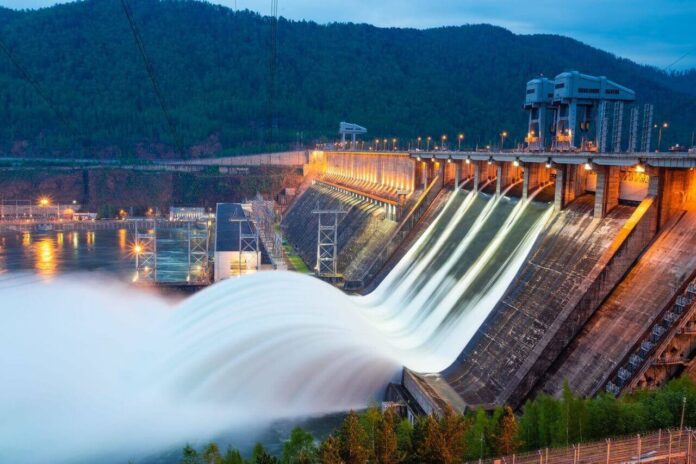The National Hydroelectric Power Corporation (NHPC) is stepping in to renovate the Dumbur hydroelectric project, the sole hydroelectric facility in Tripura, after flood damage rendered it inoperative. This initiative marks a significant step toward restoring and improving the state’s power generation capabilities, a critical need for its growing population and economy.
The Dumbur hydroelectric project, located on the Gomati River, has been a cornerstone of Tripura’s power infrastructure since its inception. However, devastating floods in recent years severely damaged the plant, forcing it to cease operations. With NHPC’s decision to undertake a comprehensive study for its renovation, hopes have reignited for the revival of this important energy source.
The study, scheduled to begin shortly, will focus on assessing the extent of the damage, evaluating the current infrastructure, and formulating a robust plan for restoration and modernization. NHPC has already dispatched a team of engineers and technical experts to the site, who will collaborate with local authorities and the Tripura State Electricity Corporation Limited (TSECL) to ensure a thorough analysis.
The renovation project will not merely restore the facility to its former capacity but will also incorporate modern technologies to enhance efficiency and resilience. NHPC officials have indicated that the upgraded facility will feature state-of-the-art equipment designed to withstand extreme weather conditions, a crucial requirement given the region’s vulnerability to natural disasters.
The project’s restoration holds immense significance for Tripura’s energy landscape. The Dumbur hydroelectric plant, when operational, played a vital role in meeting the state’s electricity demands. Its closure has increased the reliance on alternative power sources, many of which are less sustainable and more expensive. The successful renovation of this project promises to reduce the energy deficit and lower dependency on fossil fuels, aligning with India’s broader goals of promoting renewable energy.
Local communities and environmental experts have expressed a keen interest in the project. For many residents, the hydroelectric plant represented not just a source of electricity but also a symbol of progress and self-reliance. Its closure had far-reaching consequences, affecting industries, agriculture, and households across the state. The restoration efforts are expected to bring relief to these sectors, potentially spurring economic growth and development.
Environmental sustainability will be a central consideration during the renovation process. NHPC has emphasized its commitment to minimizing ecological impact while undertaking the project. Preliminary plans suggest measures to ensure that the dam’s operations do not disrupt the local ecosystem or adversely affect aquatic life. Environmental impact assessments will form a key component of the study, and NHPC has assured stakeholders that it will adhere to strict environmental standards.
The restoration of the Dumbur hydroelectric project is also expected to create employment opportunities for local residents. From skilled engineering roles to construction jobs, the project will generate work across various sectors, providing a much-needed economic boost to the region. The involvement of local communities in the renovation process will further strengthen ties between the project and its beneficiaries, fostering a sense of ownership and shared purpose.
The Tripura government has welcomed NHPC’s initiative, expressing optimism about the project’s potential to transform the state’s energy infrastructure. Officials have highlighted the importance of collaboration between NHPC and local authorities, emphasizing the need for efficient execution and timely completion. The government has pledged its full support to the initiative, ensuring that administrative and logistical hurdles do not impede progress.
Experts believe that the successful renovation of the Dumbur hydroelectric project could serve as a model for similar projects across the country. India, with its vast network of rivers and abundant hydropower potential, stands to benefit immensely from modernizing its existing hydroelectric facilities. Projects like Dumbur demonstrate how strategic investments in renewable energy can contribute to sustainable development, energy security, and environmental conservation.
As NHPC embarks on this ambitious endeavor, the people of Tripura eagerly anticipate the return of their state’s primary hydroelectric facility. The project symbolizes hope for a brighter, more sustainable future, where renewable energy takes center stage in powering homes, businesses, and industries. The successful renovation of the Dumbur hydroelectric project will not only restore an essential energy source but also reaffirm the commitment to building resilient and sustainable energy infrastructure in India.




